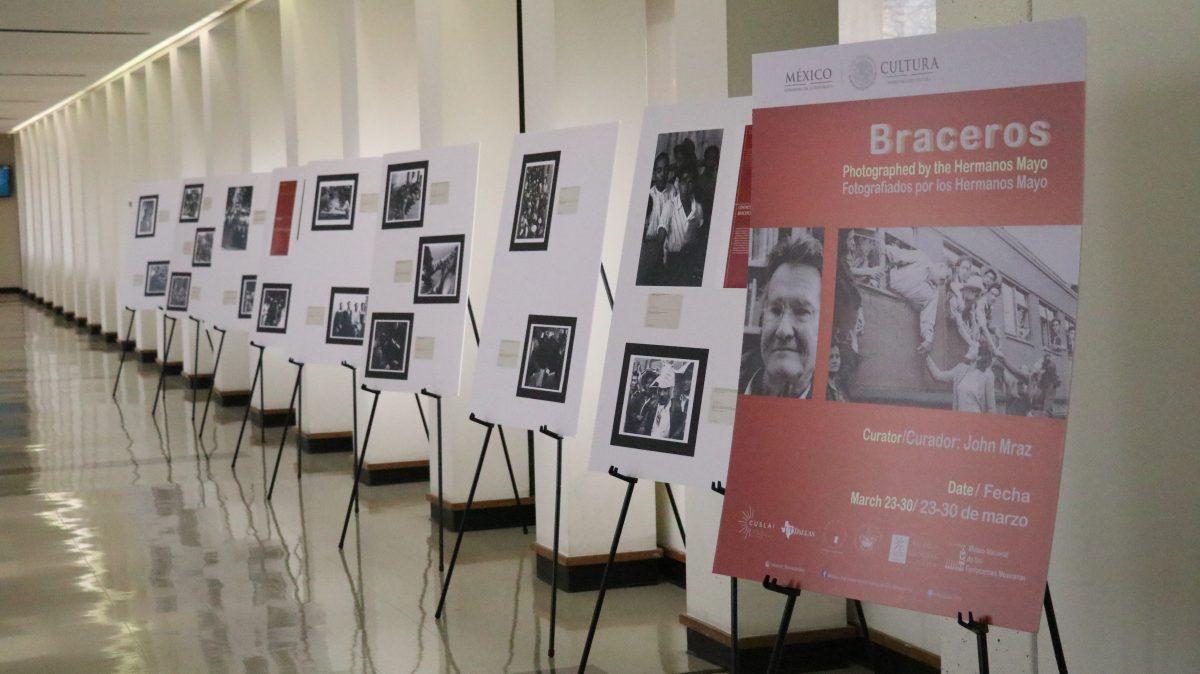An art exhibit displayed at UTD hosts a collection of photographs by immigrants of immigrants for students to observe a segment of history where Mexico and the United States intersect.
A series of photographs by Los Hermanos Mayo portray Braceros, Mexicans legally contracted to work in the United States in the mid-1900’s. It will remain displayed in the walkway between Jonsson and Founders from March 23-30.
The Braceros came to the United States between 1942-1964 for two main sectors: agricultural tasks and railroad maintenance. “Brazo” means arm, so Braceros means, “the arms that came up” to assist the labor force during World War II. When much of the working-age male population of the United States was involved in the war effort, the contracted Mexican workers contributed significant labor to the U.S. economy.
The Center for U.S.-Latin America Initiatives invited a prominent Mexican photography scholar, John Mraz from Benemerita Universidad Autonoma de Puebla, Mexico, to speak at the inauguration of the exhibit.
“Basically, the exhibit is a way of showing that Mexicans have always been a fundamental part of the United States workforce,” Mraz said. “You can write all you want, but when you see the photos, they tend to stick more in your head than do words.”
Los Hermanos Mayo, refugees from the Spanish civil war, worked as a five-man photographer collective in Mexico during the mid-20th century. In 1982, Mraz began working on their archive, containing 5 million negatives, or photographic images. That same year, he met Julio Mayo, the oldest living member of the collective. The two are now old friends; together, Mraz and Mayo recently celebrated the latter’s 100th birthday.
“The pseudonym ‘Mayo,’ which the five members of the collective have used — Francisco (Paco), Faustino, Julio, Candido, and Pablo — is a nom de guerre (pseudonym) that reflects both their commitment to the working class and the difficulties that can accompany such an undertaking,” said Mraz in his publication, “Foto Hermano Mayo: A Mexican Collective.”
Mraz said he realized an exhibit about the Braceros shouldn’t be circulating in Mexico, but in the United States because they are a vital part of both nations’ history. He began writing to professors about the opportunity, and since then, the University of Washington, Yale, Columbia University, the University of Chicago and dozens more have hosted the collection of photographs.
“Thinking people realize that the U.S. is a hybrid nation, a nation of immigrants, and that racism embodied by Trump is simply not acceptable in a nation of so many hues,” Mraz said. “It struck me that it would be an important time to have the exhibit around the U.S. because we live in a hyper-visual world.”
Mraz said the most important thing students and faculty can take away is the idea that travel and art broaden us.
“Visual art makes you see the world differently,” Mraz said. “That’s very important in terms of breaking the gloss. We see through a filter; you don’t see the world like I see the world. People see the world in the function of the historical context that has formed them, and through racial, ethnic, gender and class relations. Great art can make you suddenly see the world differently.”
The 36 photos depict the struggles of everyday life for ordinary Mexicans. Mraz said the Mayo brought a different ethos to photographing immigrants, and that idea is especially important in the current racist political climate of the United States.
“We often don’t live up to our possibilities because we’re afraid or because we think we’re stupid,” Mraz said. “Great art inspires us to become better people than we think we can be.”











